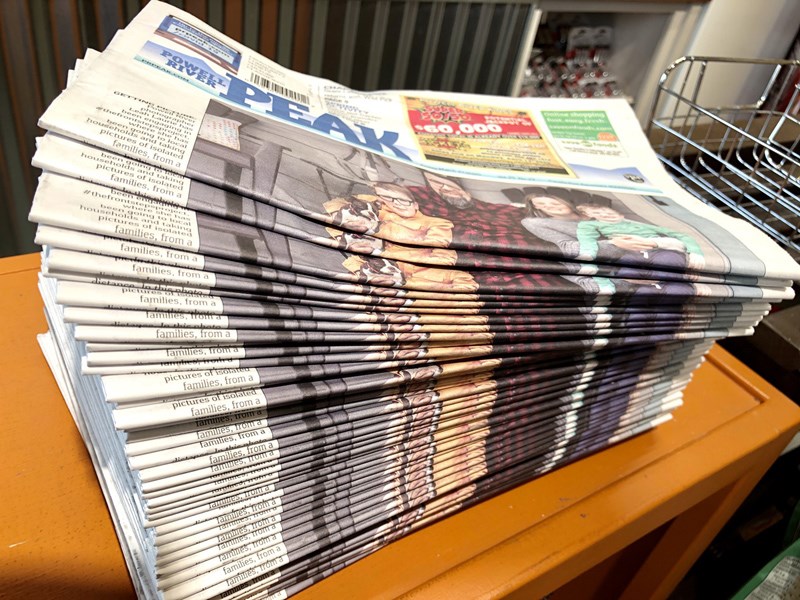Concerns have been expressed to the Peak about the prospect of contracting COVID-19 from contact with the newspaper.
According to a story citing top doctors and scientists by Earl J. Wilkinson, executive director and CEO of the International News Media Association (INMA), there has never been a documented incident whereby COVID-19 has been transmitted from a print newspaper, print magazine, print letter or print package.
In the story, dated March 23, Wilkinson stated that the INMA had received a few inquiries about the scientific possibility of contracting COVID-19 from print products.
Wilkinson included what the World Health Organization says about whether it’s safe to receive a package from an area where COVID-19 has been reported: “The likelihood of an infected person contaminating commercial goods is low and the risk of catching the virus that causes COVID-19 from a package that has been moved, travelled and exposed to different conditions and temperature is also low.”
Wilkinson stated that the novel coronavirus lasts longest on smooth, non-porous surfaces. He added that researchers found the virus was still viable after three days on plastic and stainless steel.
“Researchers say that is not as ominous as it sounds since the virus’s strength declines rapidly when exposed to air,” stated Wilkinson. “Because the virus loses half of its potency every 66 minutes, it is only one-eighth as infectious after three hours when it first landed on a surface. Six hours later, viability is only two per cent of the original, researchers found.”
Wilkinson stated the virus was not viable after 24 hours on cardboard. For newsprint, which is much more porous than cardboard, virus viability is presumed to be even shorter, he added.
Wilkinson cited a March 10 interview on BBC Radio Scotland, where virologist George Lomonossoff, who uses molecular biology to understand assembly and properties of viruses in the United Kingdom, debunked the idea of transmission through newsprint.
“Newspapers are pretty sterile because of the way they are printed and the process they’ve been through,” stated Lomonossoff. “Traditionally, people have eaten fish and chips out of them for that very reason. So, all of the ink and the print makes them actually quite sterile. The chances of that are infinitesimal.”
Peak publisher Kelly Keil said it’s important to protect the newspaper’s carriers and readers alike, and the Peak is taking all sanitary and distancing precautions seriously.
“What’s most important is that people abide by the recommendations from experts such as provincial health officer Dr. Bonnie Henry around social distancing, isolation where possible, handwashing and avoiding touching the face,” she added.
People concerned about newspapers and mail can wipe the envelopes or leave them in the mailbox or outside overnight.



